The content of the article
Winter honey agaric - a species known to most mushroom pickers, belonging to the genus Flammulin. Often it is called velvet-legged or enokitake.
View description
The fruiting body of representatives of this species is the hat-cutaneous. The maximum diameter of the hat enokitake reaches 100 mm, in adult mushrooms the caps are flat, in young ones with a slight bulge. The color of this part of the fungus varies from yellowish-orange to saturated honey-brown. The edges are slightly lighter than the central part.
The leg of the honey agaric is located exactly in the center of the cap, while its diameter reaches 10 mm and its length is 70 mm. The shape of the leg is correct - cylindrical, the body is tubular with a fairly dense structure. The color of the legs is similar to brown velvet.
The flesh of the cap is quite thin, with a pleasant taste and aroma, color - from pure white to light yellow. Often, lamellar tissue adheres to the cap. The color of the plates is buffy or white. The leg basically has no residues of the bedspread, white spores, the shape is ellipsoidal or cylindrical.
Species distribution
The peak of growth of this type of mushroom and, accordingly, their collection falls on two seasons - spring and autumn. I would like to draw attention to the fact that honey mushrooms of this species, as a rule, do not grow individually, but bear fruit in rather large groups.
Often you can see several fused mushrooms. This species also continues to grow in the cold season, for which, in fact, got its name.
Edibility
Velveteen-footed honey agaric is an edible mushroom that can be eaten in almost any form (fresh, pickled, boiled, fried, salted or fermented). According to their taste and nutritional value, this type of edible mushroom is classified in the 4th category.
The process of preparing winter mushrooms implies a mandatory primary processing of the product, a cut of the dark part of the leg in young specimens, and the use of the flesh of a hat in old ones. Note that the pre-boiled mushrooms become quite slippery. This species tolerates freezing well, without losing its excellent taste. This fact suggests that, having gathered for a quiet hunt in the forest for honey mushrooms, one should not miss mushrooms in a thawed or frozen state.
This type of mushroom is very popular in Japan and is often used to prepare traditional Japanese dishes.
Important! There are certain toxins in the pulp of the fruiting body, which are distinguished by their instability, for this reason winter mushrooms must be boiled for 20-30 minutes before cooking main dishes.
Pickled mushrooms are considered the most delicious. Mushrooms are boiled in salted water until tender, after which they are placed in a pre-prepared marinade solution, in which they should be boiled for another 15-20 minutes. After that, the finished composition is laid out on sterilized banks.
Medicinal properties
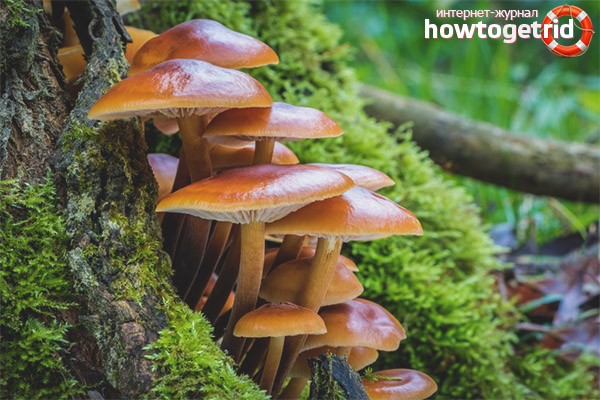
As well as many other types of edible mushrooms, winter mushrooms have some medicinal properties, which gives greater value to these tasty and healthy gifts of nature. Scientists have found that the pulp of the fruit body contains a substance such as flammulin, which helps prevent such a dangerous ailment as sarcoma. Also, mushrooms contain quite a lot of amino acids for humans, significantly exceeding what is found in many fruits and vegetables.
The more often this type of mushroom will appear in the human diet, the lower the risk of cancer. It was also revealed that winter mushroom activates the immune system.
The honey agaric has been widely used in such an area as cosmetology; on the basis of this type of mushroom, special lotions, masks, and cream formulations are made that have a rejuvenating effect and eliminate peeling and dry skin.
Cultivation of the species
The cultivation (cultivation) of honey mushrooms on a large scale is carried out, as a rule, in many countries of Asia. For these purposes, specially prepared and moistened wood or wheat straw is used. The harvest of mushrooms artificially grown on special mushroom farms is harvested year-round, however, for this, a constant condition in the premises at a certain temperature is a prerequisite. The amount of mushrooms grown artificially reaches 100,000 tons of mushrooms annually.
Growing at home
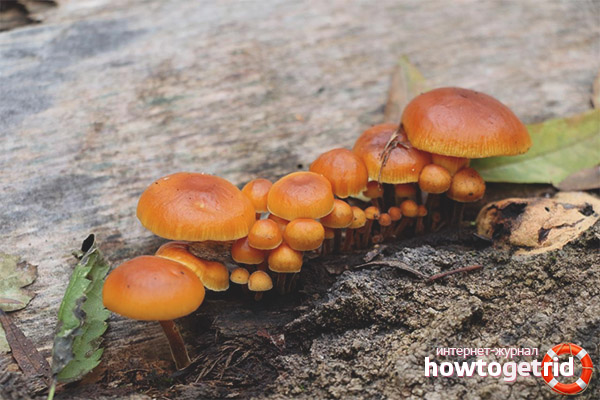
In our country, such a type of mushroom as winter mushroom is relatively little known, as mentioned above, this species is more common in Asian countries, where it is cultivated on an industrial scale. However, this mushroom is not too picky and, if desired, any layman can grow it at home (on the balcony or loggia). For these purposes, you should purchase a ready-made substrate that fits into pre-prepared containers, ordinary glass jars would be the ideal solution. At the next stage, fungal mycelium is placed in the substrate.
We draw attention to the fact that, subject to all technological standards and after the appearance of the first rudiments of fruit bodies of honey mushrooms, it will be possible to collect the first crop after two weeks. Honey mushrooms, which are grown under artificial conditions, use all parts for food - both the hat and the leg. As a rule, the average yield from one three-liter jar is up to 1.5 kg of mushrooms.
What to consider when collecting winter mushrooms
The most similar in appearance to the winter open-air is such a poisonous mushroom as galleria fringed. We draw attention to the fact that the peak fruiting of these mushrooms does not coincide, respectively, the risk of confusing the species during harvesting is extremely small. But everyone should know that the main difference between the poisonous species and the honey agaric is the characteristic ring on the leg inherent in many inedible and dangerous to humans mushrooms.
Video: winter honey agaric (Flammulina velutipes)

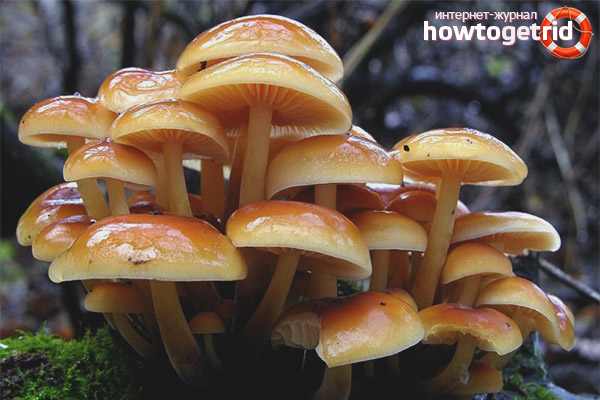
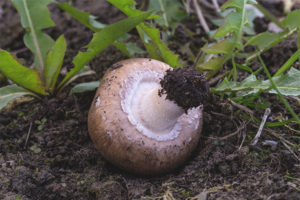
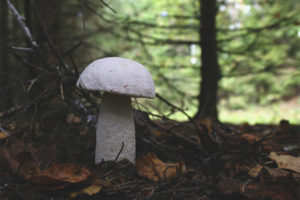
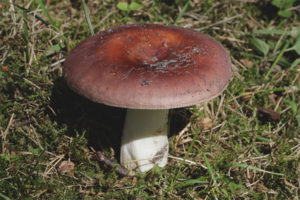
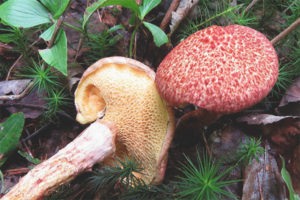
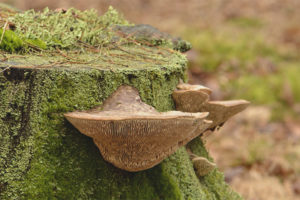
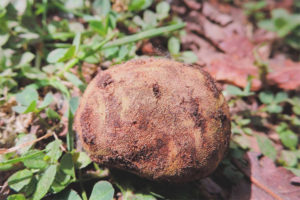
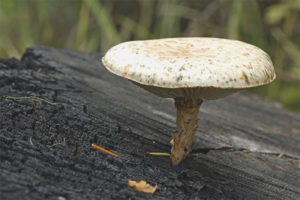
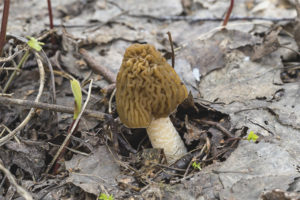
Submit